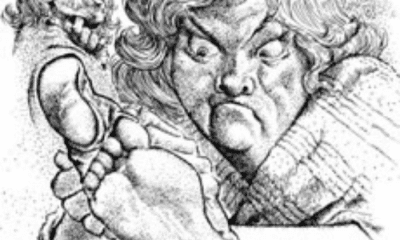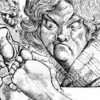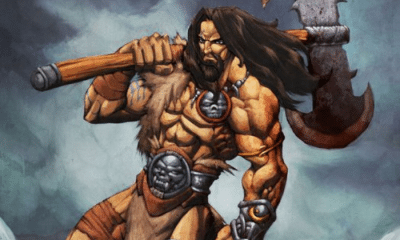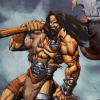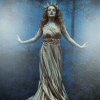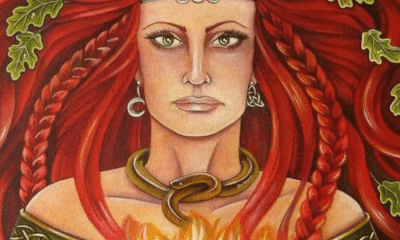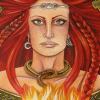Irish
Who is Lugh in Irish Mythology?
Lugh is one of the most high-profile figures in Irish mythology, but how much do you actually know about the god who could seemingly do everything?
In Irish mythology, Lugh was one of the kings of the Tuatha Dé Dannan. One of many godly races of Ireland, the Tuatha Dé Dannan were led to victory over their greatest enemies by Lugh.
Lugh was not, however, the god of any specific domain. He was a warrior, a trickster, a smith, and even a musician.
Lugh is impossible to place into any category, which is exactly what made him so valuable to the Tuatha Dé Dannan. While many gods could do a few things exceptionally well, Lugh seemed to be a master of almost every skill.
Lugh: The God Who Could Do Everything
Lugh is one of the most prominent gods in Irish mythology, likely because he was a master of so many domains.
Lugh was a powerful warrior. He was known for his skill with a spear but bested his most prominent foe, the Fomorian leader Balor, with a simple sling.
He was also a natural king. He ruled not only by might, but also as the god of laws, oaths, and truth.
He was a natural craftsman who could produce exceptional work as a smith or wright. He was an artist as well, known best for his poetry and skill with the harp, a historian, and even had skill in sorcery.
It is little wonder that one of Lugh’s most common epithets, Ildánach, meant “skilled in many arts.”
These skills won him the command of the Tuatha Dé Dannan.
Lugh was the son of Cian, one of this group of deities, and Eithniu of the Fomorians. The two groups of gods had been engaged in a long and drawn-out war and the marriage of Cian and Eithniu was meant to unite them.
Hostilities did not end, however, so Lugh was fostered among the Fir Bolg, another group that had already surrendered to the Tuatha Dé Dannan.
When he went to Tara, the home of his father’s people, he was told that he could only enter if he had a skill to offer. As he listed each of his many skills he was still denied because the Tuatha Dé Dannan already had a god with that skill.
When Lugh asked if any of the Tuatha Dé Dannan could do all those things at once, however, he was allowed to enter Tara. He quickly proved himself and was given command over the Tuatha Dé Dannan in their fight against the oppressive Fomorians.
His victory over the Fomorians began with the death of his father, Cian, at the hand of an old rival’s sons. Three sons of Tuireann killed Cian, but Lugh soon spotted the grave and knew their crime.
Lugh offered to let the brothers live if they completed a series of quests to retrieve powerful magical items. The last item they were to collect would have killed them when they touched it, however.
They tried to refuse, but Lugh forced them to go on, denying them the use of a magical skin they had retrieved that would have healed their wounds. Cian’s murderers all died and Lugh used the items they had brought back in his battle against the Fomorians.
Before the Second Battle of Mag Tuireadh, Lugh gave his army a speech that gave every man and woman the power of a great king. Their own king, Nuada, was killed by the Fomorian leader Balor, however.
Balor was, in fact, Lugh’s grandfather, and the two faced off on the battlefield. Balor opened his large eye, which had the power to instantly poison anyone it looked upon.
Lugh pulled out his sling and quickly shot at Balor. The stone went through his eye and out the back of his head, killing him instantly and the Fomorian army into turmoil.
After the battle Lugh found Bres, the former king of the Tuatha Dé Dannan who had betrayed them. He agreed to let the traitorous god live if he taught the Tuatha Dé Dannan the secrets of agriculture.
In addition to his many skills and the battle he won for the Tuatha Dé Dannan, Lugh is also remembered as the father of one of the most famous heroes of Irish legend. Cú Chulainn, who appears in Scottish and Manx legends as well, is said to be both his son and an incarnation of Lugh in mortal form.
My Modern Interpretation
Because of his many skills, it is difficult to form a direct comparison between Lugh and any other mythological figure.
The Celtic Lugan and Welsh Lleu Llaw Gyffes are likely related. Little is known of Lugan, however, and the mythology of Lleu Llaw Gyffes has significant differences.
There are, however, some individual aspects of Lugh’s mythology that are reminiscent of stories and archetypes from other Indo-European religions.
There seem to be some similarities between Lugh and the Norse god Thor. Lugh’s spear, like Thor’s hammer, was said to always hit its mark and return to the hand of its owner.
Lugh was also sometimes said to be a thunder god, like Thor. The sound of thunder was said to be the din of battle between Lugh and Balor according to folklore.
Lugh does not seem to entirely fit the archetype of a sky god, however. Also, some of the specific links between Lugh and Thor are from later texts that would have more likely been influenced by non-Irish beliefs.
His association with kingship and law likens him to the Greek Zeus. Zeus was also part of a succession of kings who earned his throne by killing a direct ancestor in a battle between the gods.
The two may also be connected through their sons. Cú Chulainn has many similarities to Hercules.
The scope of his skills and his association with music and poetry bears some similarity to Apollo. Most scholars, however, reject the association of Lugh with a solar deity.
Individual scenes within his story also have similarities to legends from other parts of Europe and Asia.
The poisonous eye of Balor, for example, is reminiscent of the cyclops in Greek mythology, drawing a possible comparison between Lugh and Odysseus. To those familiar with the Judeo-Christian tradition, the story also has similarities to that of David and Goliath.
In other cases, Lugh seems to have more in common with the villains of popular myths than the heroes. The Greek mythology, for example, it is usually the wicked usurper king who sends the hero on deadly quests.
Lugh has similarities to many archetypes of Indo-European mythology, but does not seem to fit well within any of them.
The best interpretation of Lugh’s origins may be in his entrance to Tara. While the Tuatha Dé Dannan had many gods who were skilled in one or two fields, only Lugh was capable of doing virtually anything.
Lugh may best be interpreted not as a single type of god, but as an amalgamation of many sources. In combining traits and acts of many types of gods and heroes, he fit the image of a deity so powerful and highly-skilled that he could win a war almost single-handedly.
In Summary
Lugh was one of the chief gods of Irish mythology. A king of the Tuatha Dé Dannan, he had been born in a dynastic marriage during their fight against the Fomorians.
When Lugh tried to take his place among the Tuatha Dé Dannan, he had no single skill that another of the gods did not already offer. Instead, he was let into Tara and given command because he was a master of virtually every skill.
Lugh was a warrior, craftsman, smith, artist, poet, and sorcerer. He acted as both a king and a trickster.
Lugh tricked his father’s killers into bringing him magical items that would help the Tuatha Dé Dannan win their war. In battle, he killed the Fomorian captain, also his grandfather, with a single stone from his slingshot.
He was also the father of one of Irish folklore’s most legendary heroes, Cú Chulainn.
Lugh is impossible to fit into any single archetype because his skills and actions are so varied. Instead, he was the deity who was “skilled in all arts,” likely a combination of many different sources, making him the ideal leader of the Tuatha Dé Dannan.


